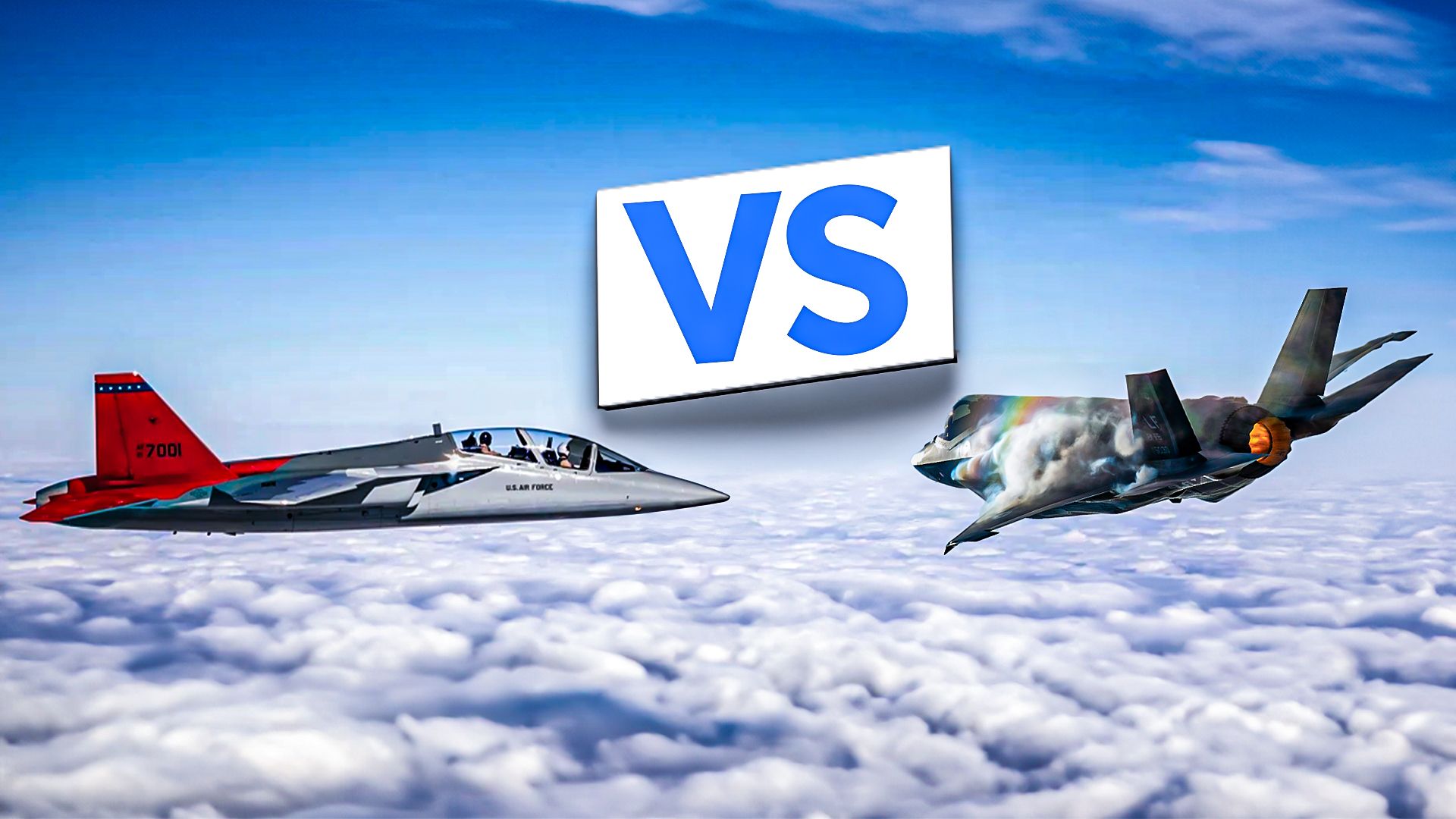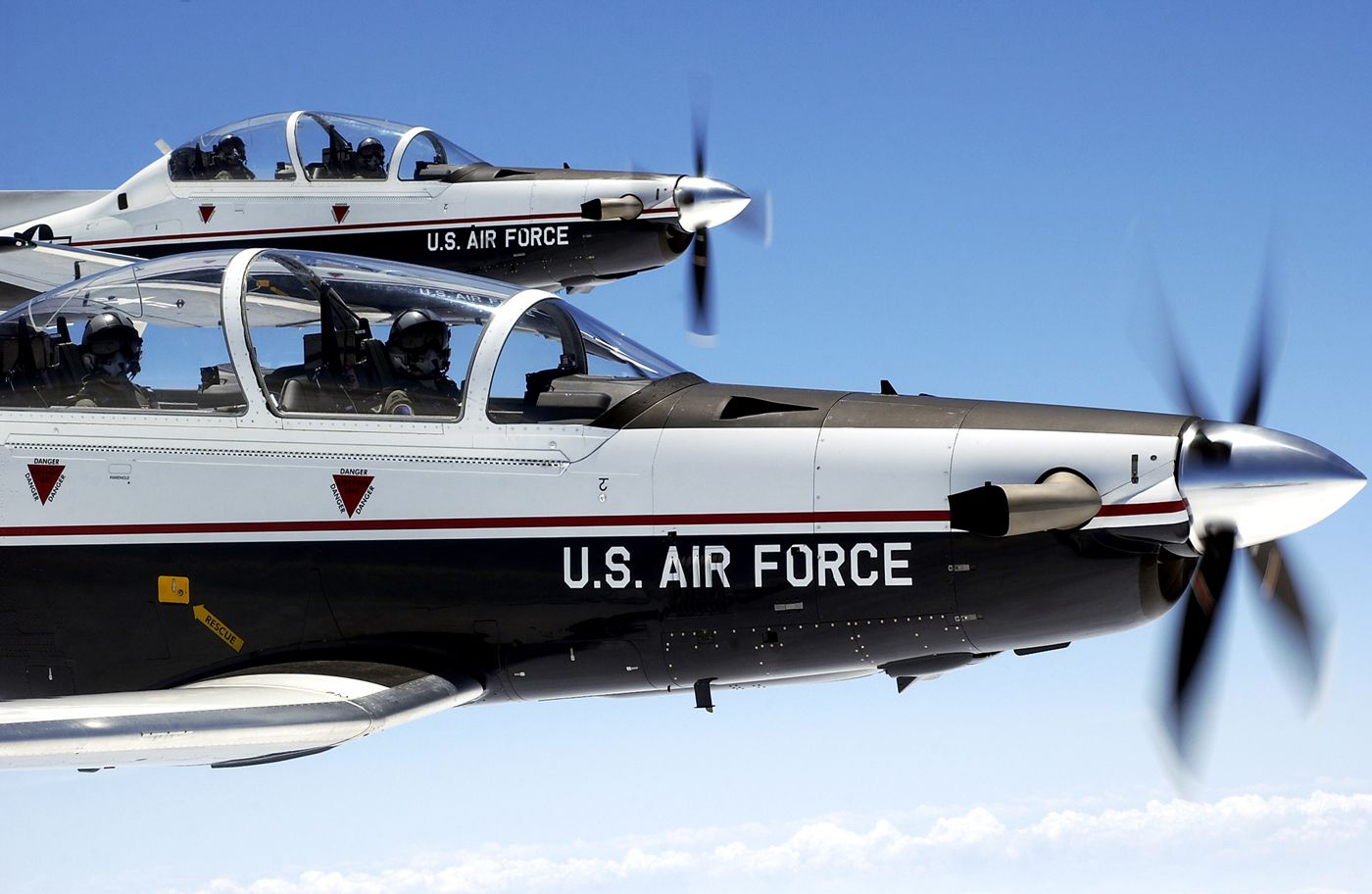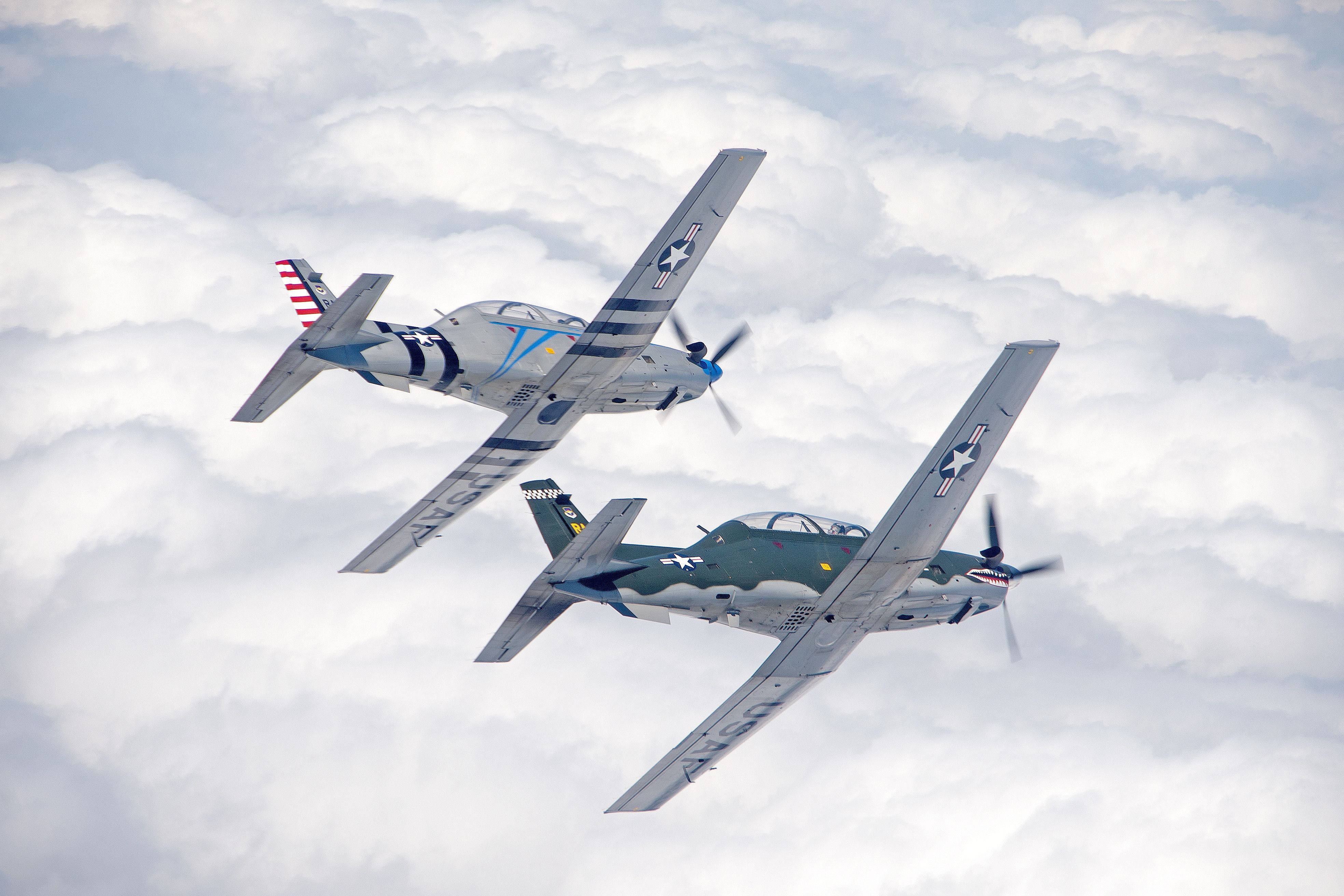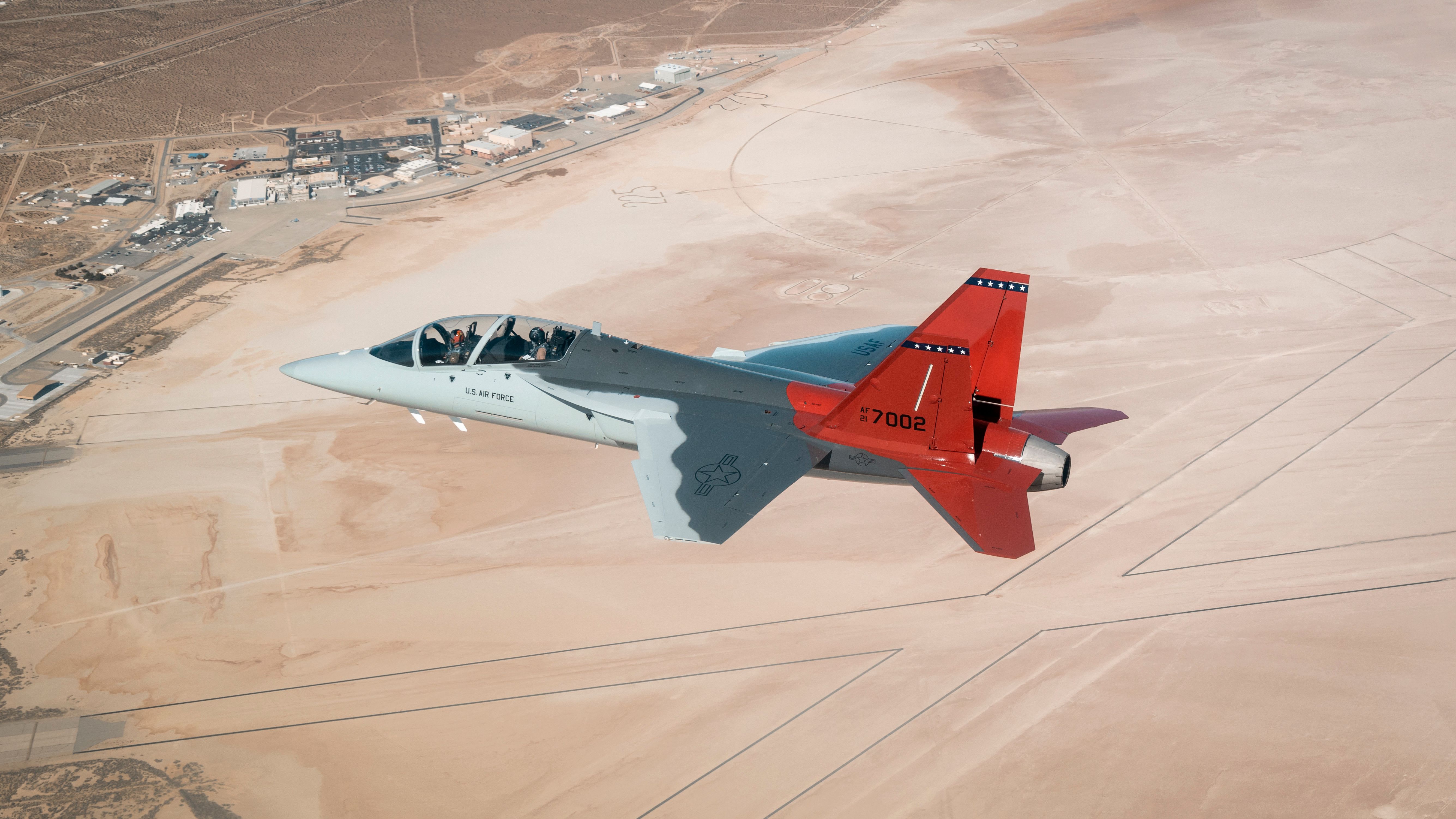Summary
- Military pilots undergo intensive training in trainers and advanced jet aircraft for combat readiness.
- Trainer aircraft are simple and powerful and prepare pilots with basic flight skills.
- The Boeing-Saab T-7 Red Hawk is an advanced jet trainer designed to resemble a fourth-generation fighter.
Many military pilots begin their flight training without any licenses or flight hours. They must be trained to hone their skills to the level required for combat.
In the past, pilots had minimal training before being set to the battlefield. At the beginning of World War II, pilots would have less than six months or 150 flying hours. However, as time went on, training was given more priority.
Before graduating, military pilots train in two main aircraft types: trainer aircraft and advanced jet trainers. How do these aircraft compare? What does one do better than the other? Let’s find out.
How do training aircraft compare to advanced fighter jets?
Trainer aircraft
The first is a trainer aircraft. These are the equivalent of light aircraft in civil aviation. They are mainly piston-engine propeller-driven aircraft that isn’t complicated to operate, have two seats, and have forgiving flight characteristics. However, they are much more powerful and maneuverable than their civilian counterparts. The military will train pilots with various trainers, usually starting with side-by-side seating, followed by a trainer with tandem seating.
Photos: USAF
Advanced jet trainers
The second type of aircraft is advanced jet trainers, which prepare pilots for the rigors of flying high-powered, extremely maneuverable, and control-sensitive aircraft. These tend to be custom-made aircraft, or older military fighters repurposed as training aircraft. They give pilots a realistic feel for the fighters they will be flying.
Phases of training
Before pilots can graduate to fighters, they have to undergo various levels of training to prove they have the skills to handle these multi-million dollar machines. These are the typical phases of military training:
- Ab initio
- Basic training
- Advanced training
Ab initio
Ab initio means from the beginning. It is the phase where pilots with little to no training learn the basics of aircraft control. Training at this stage is similar to private pilot training. Pilots who graduate will move on to the full training program, while those who fail will be offered the chance to work as navigators, weapons officers, or other similar roles.
Training aircraft are not used during ab initio training. Light aerobatic aircraft are used instead.
Basic Training
In this phase, pilots will be introduced to military trainers. These are high-performance turboprop aircraft.
US Air Force (USAF) and Navy pilots are trained under the Joint Primary Pilot Training (JPPT) program. The trainer used for basic training is the Raytheon T-6A Texan, a Pilatus PC-9 Mk II military variant. The aircraft is a low-wing, tandem-seat, single-turboprop trainer.
Brazil, on the other hand, utilizes the Embraer EMB 321 Tucano. The aircraft has the same configuration as the T-6A Texan.
Photo: US Air Force
Advanced training
Advanced training marks the first time these pilots will get behind the controls of jet-powered aircraft. These aircraft are highly maneuverable and powerful. However, they are also controllable and forgiving to a lesser degree.
The US uses the Northrop T-38 Talon as its current jet trainer. It is a tandem-seat, twinjet, supersonic jet aircraft, the world’s first and most produced supersonic training aircraft. The aircraft was first introduced in 1961 and is showing its age. Therefore, the US began the T-X program to replace it.
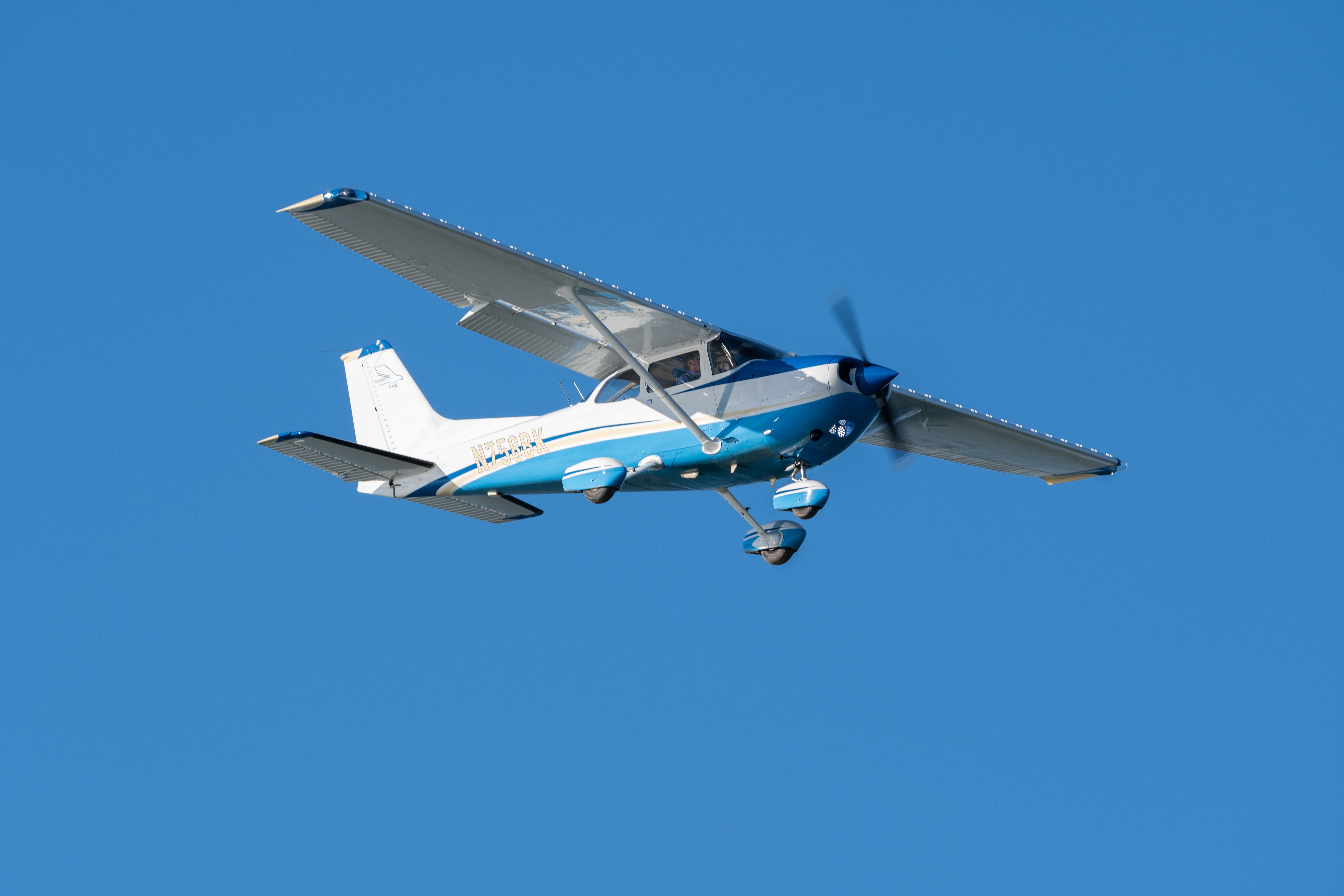
Related
5 Reasons The Cessna 172 Is A Favorite With Flight Training Schools
The type holds a world record for refueled flight endurance.
What is the most advanced trainer fighter jet?
Training-focused but mission-capable
Currently, the most advanced jet trainer is the Boeing-Saab T-7 Red Hawk. The aircraft is a subsonic, low-wing, tandem-seat, single-engine advanced jet trainer with twin tails. The aircraft was introduced in a prototype format in 2021.
The aircraft was born from the T-X program. Boeing won the contract for the program and teamed up with Sweden’s Saab in 2016 to help fund and produce the aircraft. It was initially meant to enter service in 2020, but financial constraints pushed the timeline back. It’s currently in the prototype stage, with two aircraft built.
The aircraft’s capabilities match that of a fourth-generation fighter. Boeing has plans to arm the aircraft and turn it into the F-7, a mission-capable replacement for the F-16, Northrop F-5, and Donier Alpha Jet.
It has specifically been designed as a light attack fighter for future mission capability. The aircraft is capable of pulling high-Gs and high-angle attack maneuvers.
The aircraft is powered by a General Electric F404-GE-103 after-burning turbofan engine capable of producing 11,000 lbf (49 kN) thrust. The engine has afterburner functionality and produces 17,200 lbf (77 kN) with afterburners active. However, the aircraft remains subsonic at maximum speed, reaching Mach 0.975, just shy of the speed of sound.
Photo: USAF
The T-7’s avionics suite is cutting-edge, allowing pilots to transition to new fifth-generation fighters seamlessly. It is also equipped with technology to communicate with simulators on the ground and other aircraft in the fleet for more realistic combat training.
Specifications
According to Boeing, the specifications of the T-7 are as follows:
| T-7 Red Hawk | |
| Crew | One pilot and one instructor |
| Length | 46 ft 11 in (14.30 m) |
| Wingspan | 30 ft 7 in (9.32 m) |
| Height | 13 ft 6 in (4.11 m) |
| Empty Weight | 7,165 lb (3,250 kg) |
| Maximum Takeoff Weight | 12,125 lb (5,500 kg) |
| Fuel Capacity | 4,500 pounds (2,000 kg) |
| Dry Thrust | 11,000 lbf (49 kN) |
| Afterburner Thrust | 17,200 lbf (77 kN) |
| Maximum Speed | Mach 0.975 |
| Range | 990 nmi (1,140 mi, 1,830 km) |
| Service Ceiling | 50,000 ft (15,000 m) |
| G Limits | 8 G |
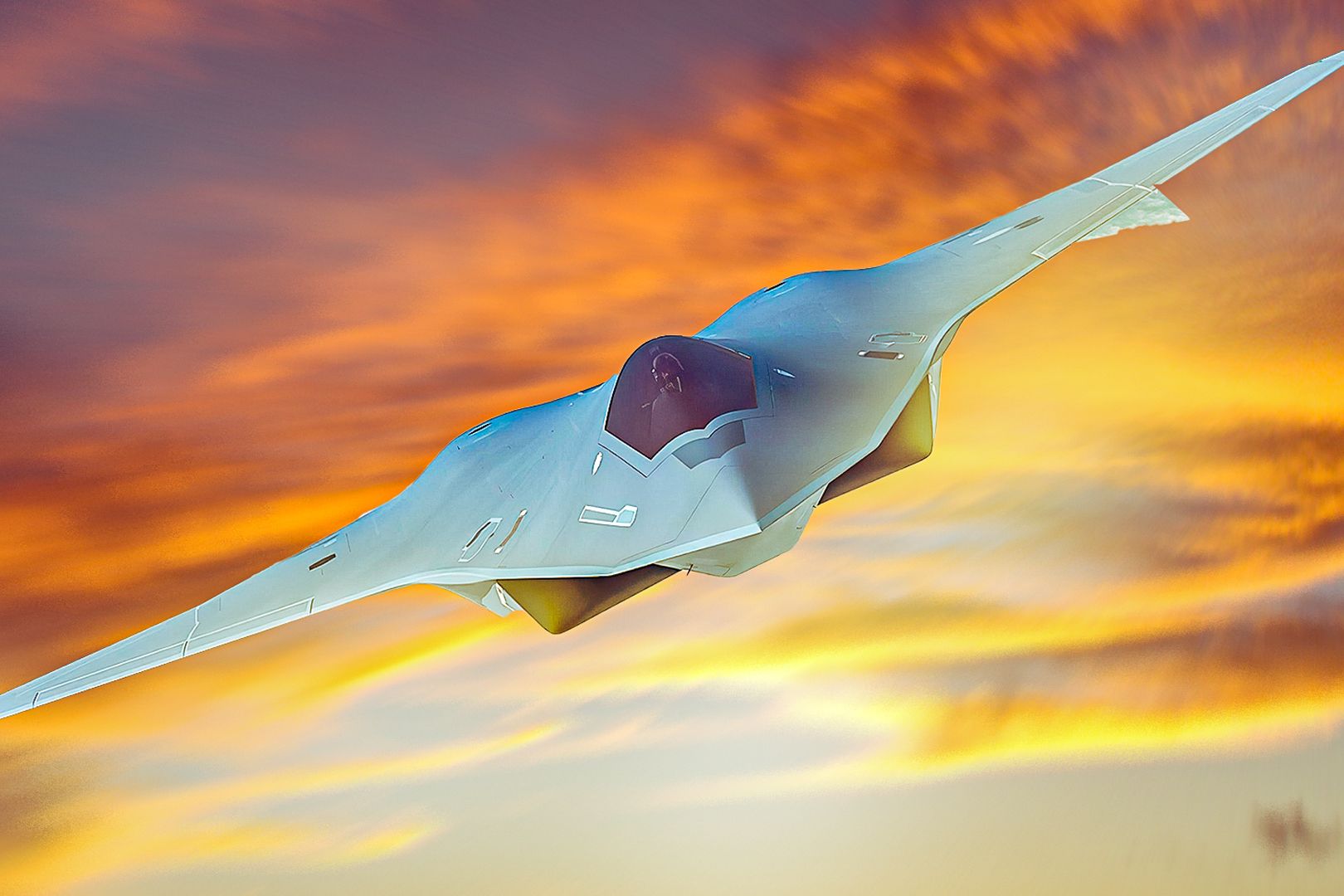
Related
5 Fast Facts About 6th Generation Fighter Jets
Most envisioned technologies for sixth-generation fighters have yet to be made available.

